You’ve probably heard about walking the Camino de Santiago at some point, right? We’re sure you have, as it’s a very special experience that attracts many walkers each year. Here is the ultimate guide to the Camino de Santiago for beginners. If you’ve never done it but feel the itch to embark on this adventure, you’re in luck! In this post, we’ll give you all the necessary information to enjoy it safely and confidently. Which is the best route, whether to do it alone or in a group for the first time, or perhaps to do it by bike or with your dog… We’ll clarify all these questions and more in this article.
Preparations Before Starting the Camino de Santiago
Before starting your pilgrimage, it’s important to make several preparations. Planning the itinerary and choosing the route, as well as when to do it and what to bring, are crucial steps.
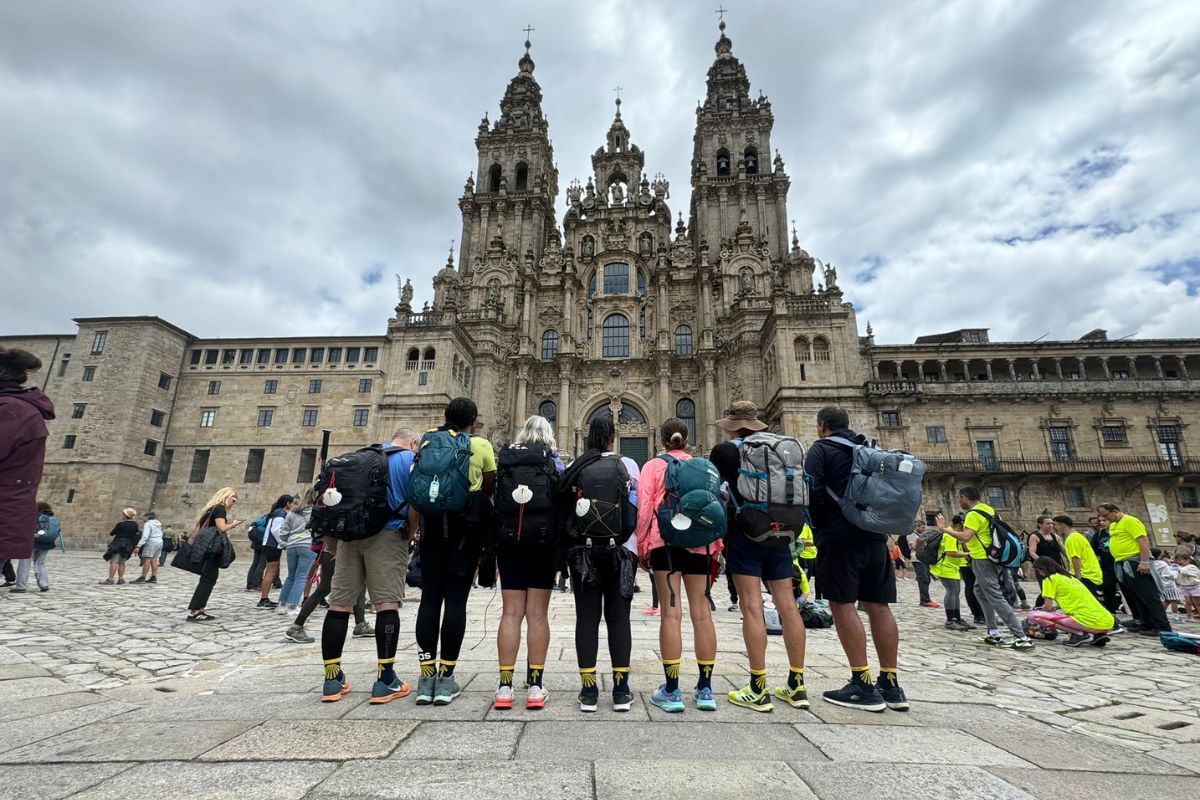
Every pilgrim, whether a beginner or not, has the Cathedral of Santiago as their goal
Planning the Itinerary and Duration of the Camino
Planning your itinerary is essential for a great experience on the Camino. Decide how many days you have available and how much you want to walk each day. Different routes have different lengths and durations, and there are longer and shorter routes. You can do the last 100 km, or even the last 200 km, of one of them, or complete an entire route in stages.
Choosing the Route of the Camino de Santiago
The answer to which is the best Camino de Santiago route for beginners is unanimous among experienced pilgrims. It’s the Camino Francés, the most popular and historic route. In the Iberian Peninsula, it starts in Roncesvalles, in beautiful Navarra, and stretches for nearly 800 km to Compostela.
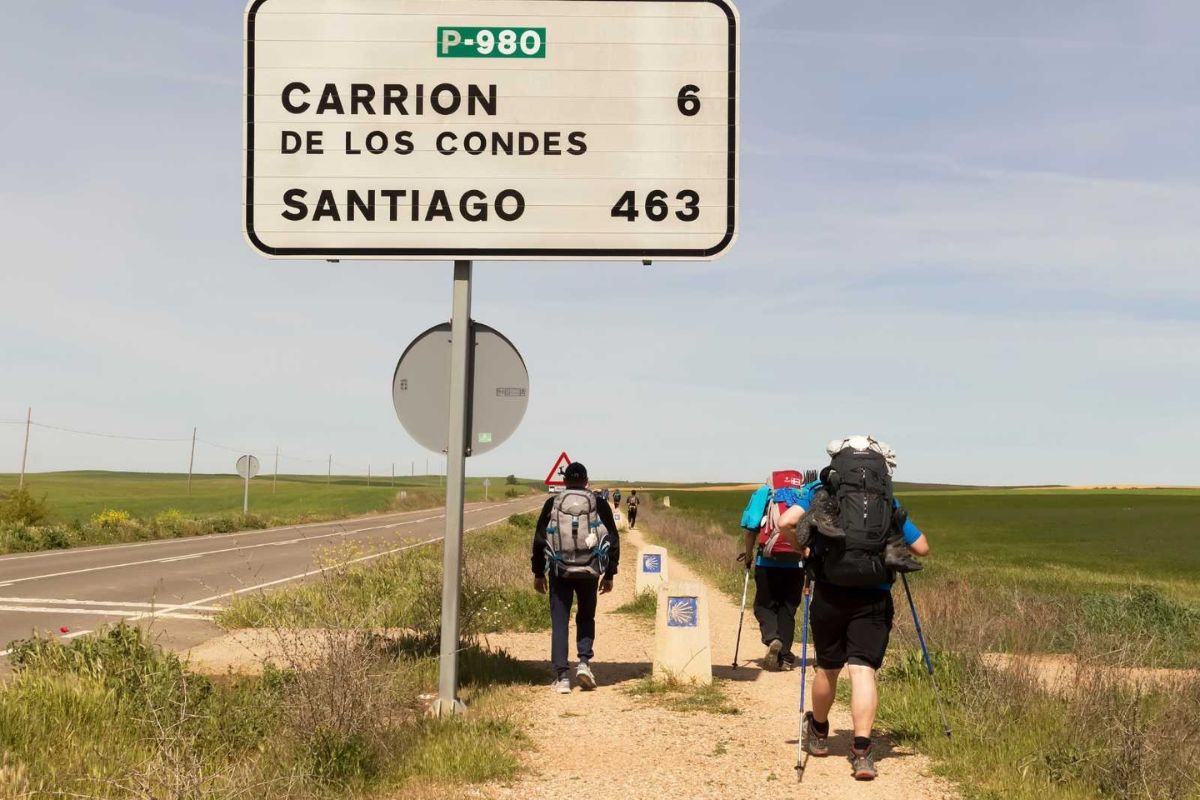
Pilgrims walking along the French Way in Carrión de los Condes
But don’t panic! If it’s your first time, we don’t recommend doing such a long route. If you’re a first-time pilgrim, the best route of the Camino de Santiago for beginners is the last 100 km of this French route. Starting in Sarria, in the province of Lugo, this final stretch is ideal for beginners for the following reasons:
- Its perfect signage, with yellow arrows and scallop shells.
- A wide range of accommodations of all types and prices.
- A complete support infrastructure, with supermarkets, bars, pharmacies, etc.
- Varied landscapes and natural environments, with mountains, hills, meadows, rivers (and many herds of cows).
- Rich historical, cultural, and rural heritage, with beautiful churches, cruceiros, hórreos, etc.
- The friendliness of the locals in the towns and villages.
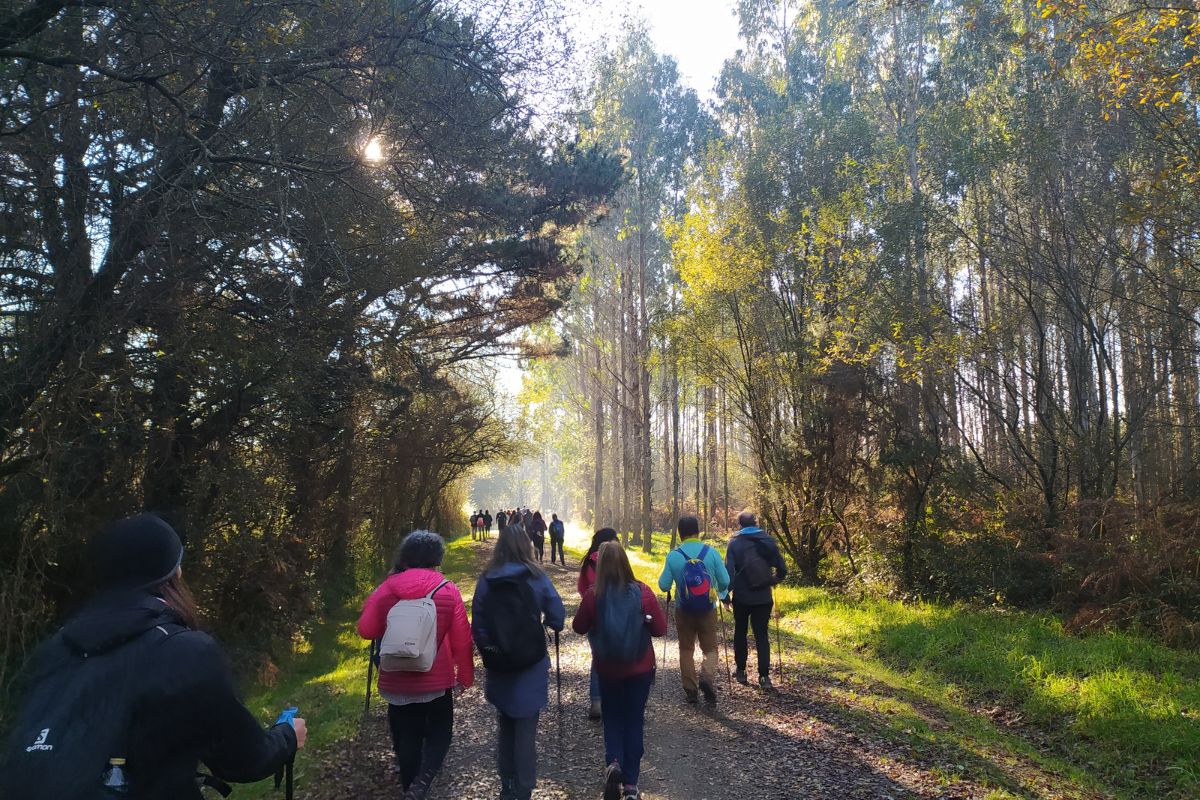
Pilgrims from all over the world await you on the Jacobean routes
And you know what the best part is? The great number of pilgrims from all over the world with whom to share the experience.
Speaking of pilgrims, you also have the option to do the Camino in a group, a way of pilgrimage that might make you feel more supported and secure.
Other routes suitable for beginners would be the last 100 km of the Portuguese Way from Tui or the English Way from Ferrol. These are also simple routes, with services and accommodations, and very well signposted, where you will also find other pilgrims.
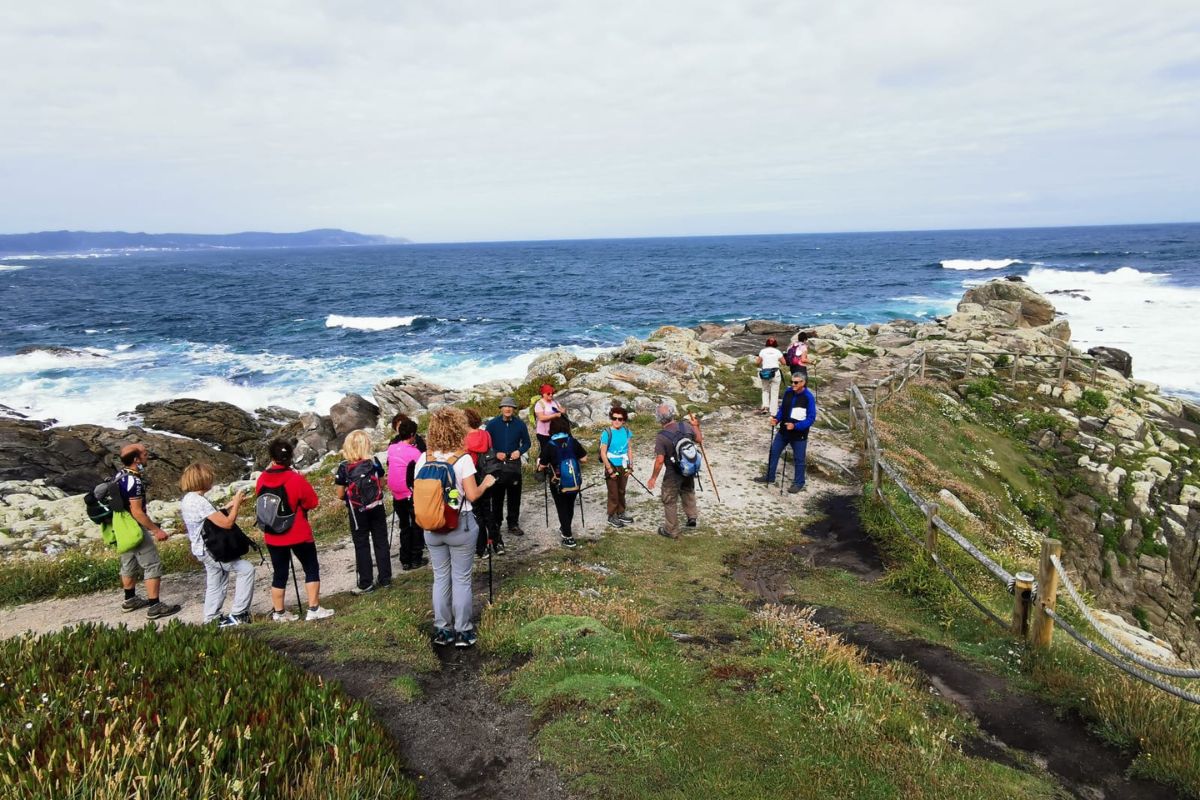
Begginers walking the Portuguese Coastal Way
Basic Equipment for the Camino de Santiago
The big question for every good beginner: what do I take on the Camino? It’s normal to have that concern when doing the Camino de Santiago alone for the first time. Like any trip, you need to pack, but in this case, in adventure mode and on your back. Thus, you should carry a comfortable backpack that includes the following:
- Comfortable, suitable, and previously used footwear for long-distance walking.
- Breathable clothing appropriate for the weather.
- A sleeping bag and travel pillow.
- Water bottle and energy foods.
- Sunscreen, hat, and sunglasses to protect yourself from the sun.
- A basic first aid kit.
Don’t forget your mobile phone, charger, external battery, documentation (including health insurance card), and very importantly, the Pilgrim’s Credential.
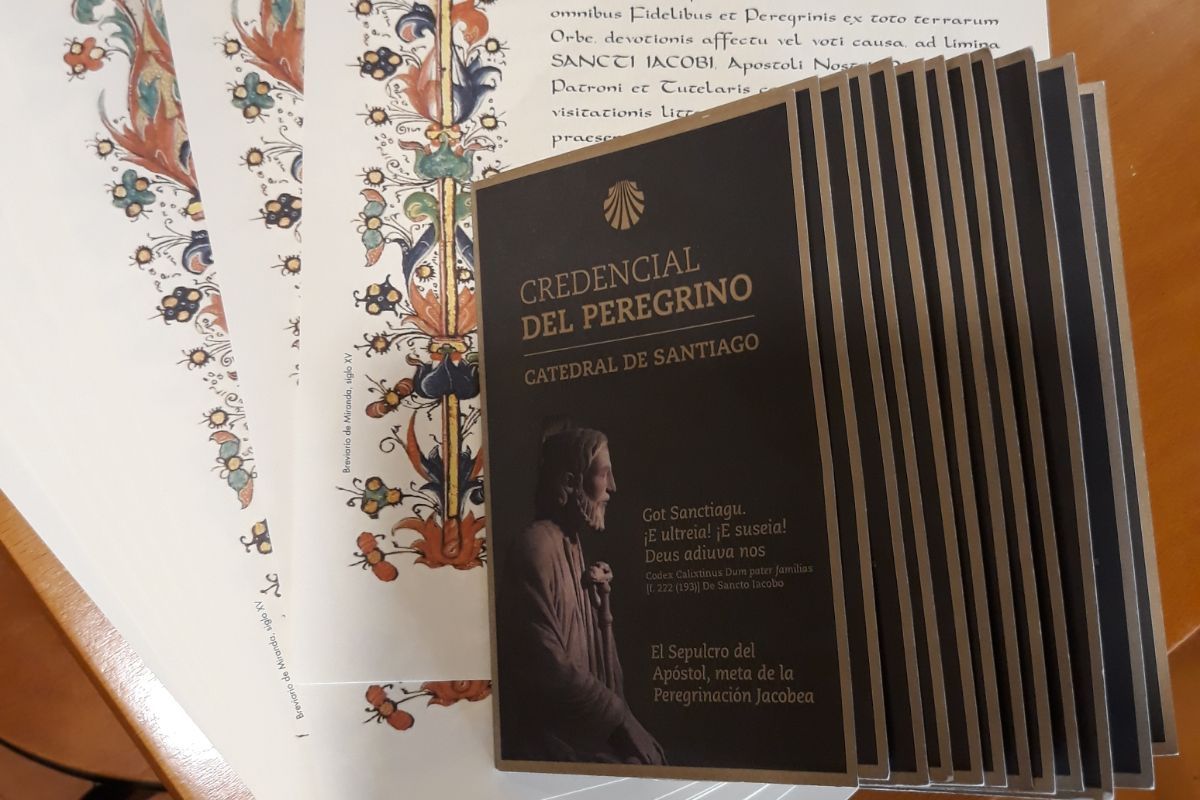
Pilgrim Credentials
Stages and Accommodation on the Camino de Santiago
During the Camino, it’s important to organize your stages well and know where you’ll sleep each night. Depending on which route you’ll take and when you’ll do the Camino, you’ll find different landscapes and pilgrim traffic.
Stages
Divide your route into manageable stages and don’t overdo it, one of the best tips we can give you. A good average is to walk between 20 and 25 kilometers a day, an achievable distance where you’ll always find some lodging option. Also, consider those stages that might be tougher, with steep ascents and descents, and it might be wise to reduce the distance.
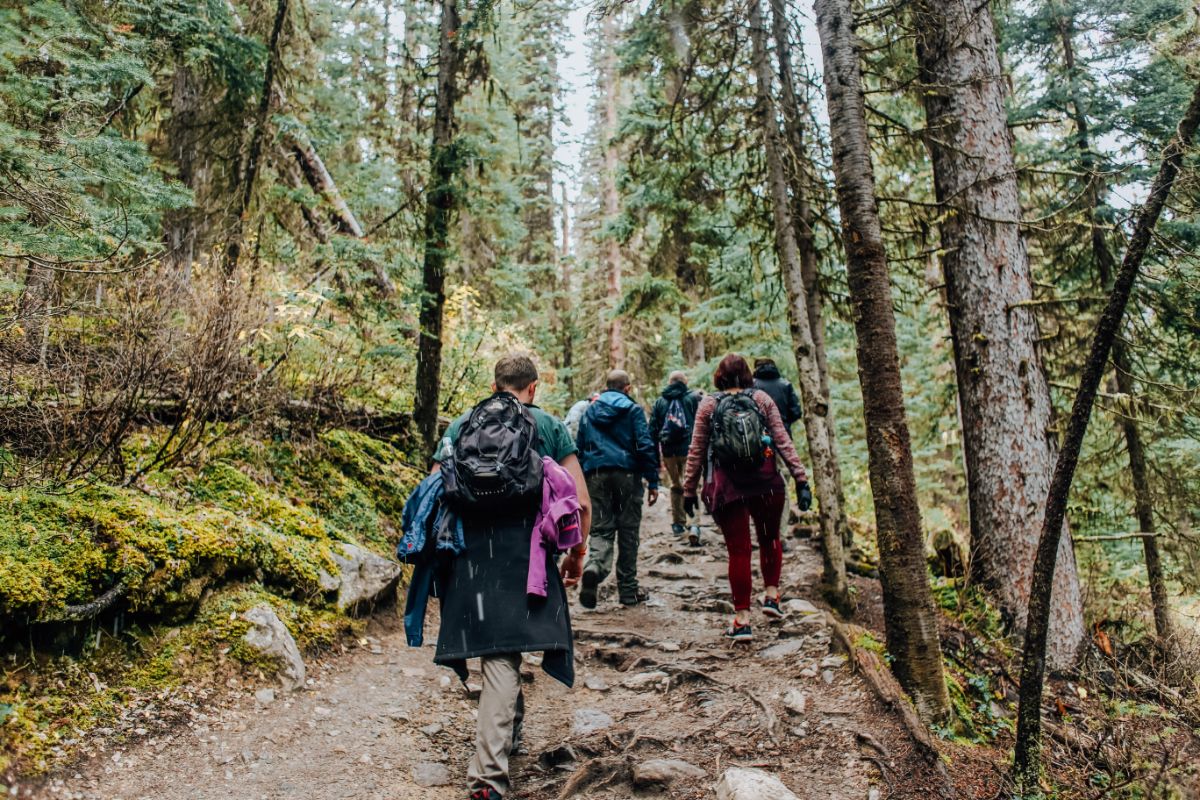
Pilgrims in an ascent on the Camino
Accommodation
There are several accommodation options on the Camino de Santiago:
- Hostels: the most economical and popular option among pilgrims.
- Guesthouses and inns: offer more amenities but are more expensive.
- Hotels and rural houses: an option with more comfort and charm.
- Campsites: if you prefer a closer experience to nature.
Book in advance, as in spring and summer there is higher occupancy on the Jacobean routes.
Physical and Mental Preparation for the Camino de Santiago
Physical and mental preparation is essential to face the Camino de Santiago successfully and enjoy all the benefits it offers.
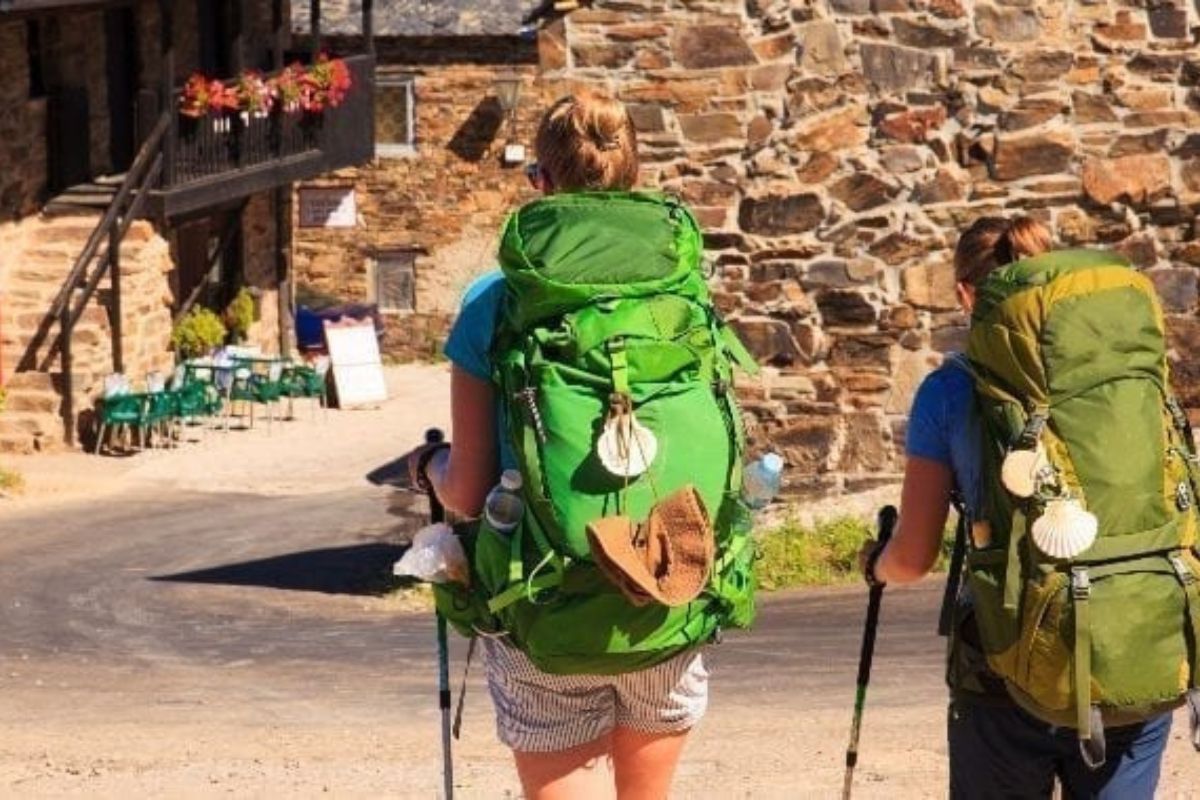
On the Camino, everything is benefits for physical and psychological health
Importance of Physical and Mental Preparation to Complete the Pilgrimage
The Camino de Santiago can be a significant physical challenge, especially for beginners. Being in good physical and mental shape will help you enjoy the journey more and avoid injuries.
Pre-Training, Tips to Avoid Injuries, Managing Fatigue
Avoid the mistakes that many beginners and pilgrims make, and follow our health tips.
- Pre-training: start training at least a month in advance. Do long walks and gradually increase the distance and vary the terrain, and practice carrying some weight.
- Equip yourself well: bring a first aid kit, use suitable footwear, and choose a good backpack, avoiding excessive weight.
- Managing effort and fatigue: stretch before and after walking, and listen to your body. Also, rest enough, hydrate well, and maintain an appropriate pace.
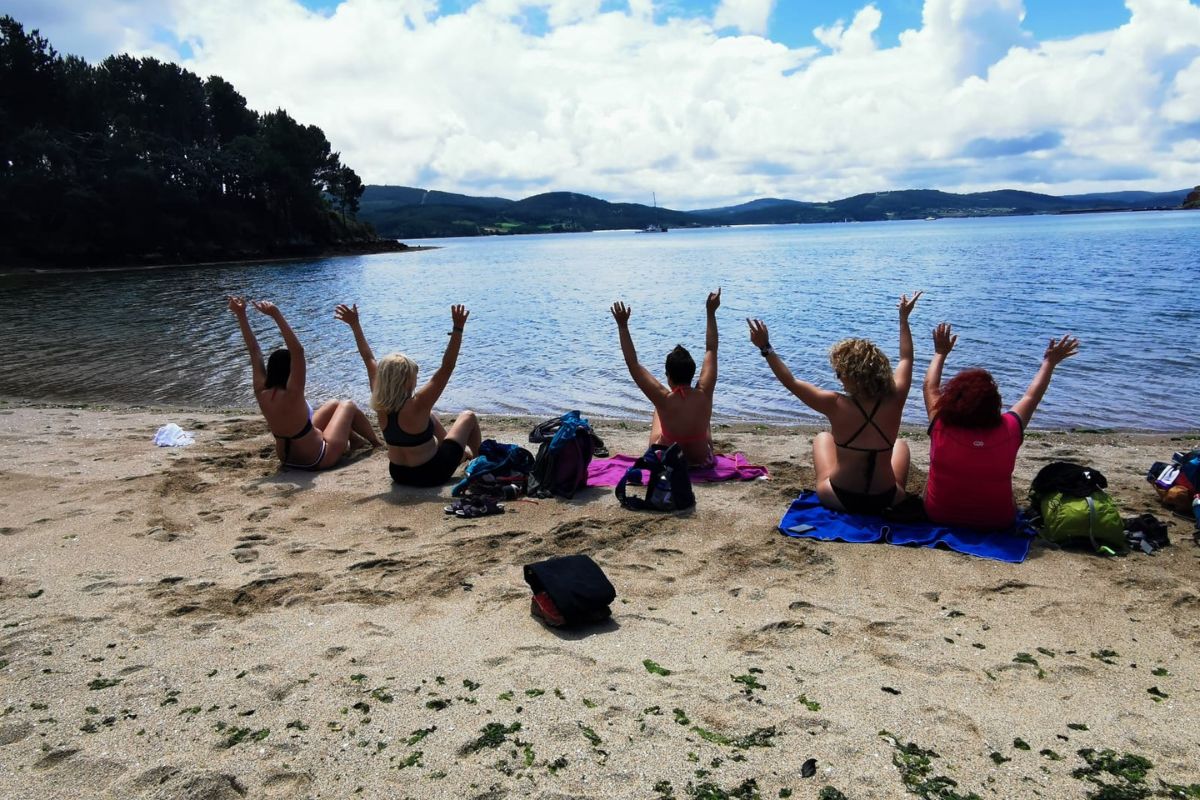
Some pilgrims resting on a beach on the Camino de Finisterre and Muxía
Cultural and Social Aspects of the Camino de Santiago
The Camino de Santiago is also an opportunity to immerse yourself in the rich culture and traditions of the regions you pass through. Take advantage to visit the monuments scattered along the Camino, as well as some of the most beautiful towns on the Jacobean routes.
On the other hand, be prepared to meet people from all over the world, which will enrich your experience. Pilgrims from all over the planet, with different languages and cultures, will accompany your steps and you can enrich yourself personally. Additionally, the Camino is an ideal place to make new and lasting friendships.
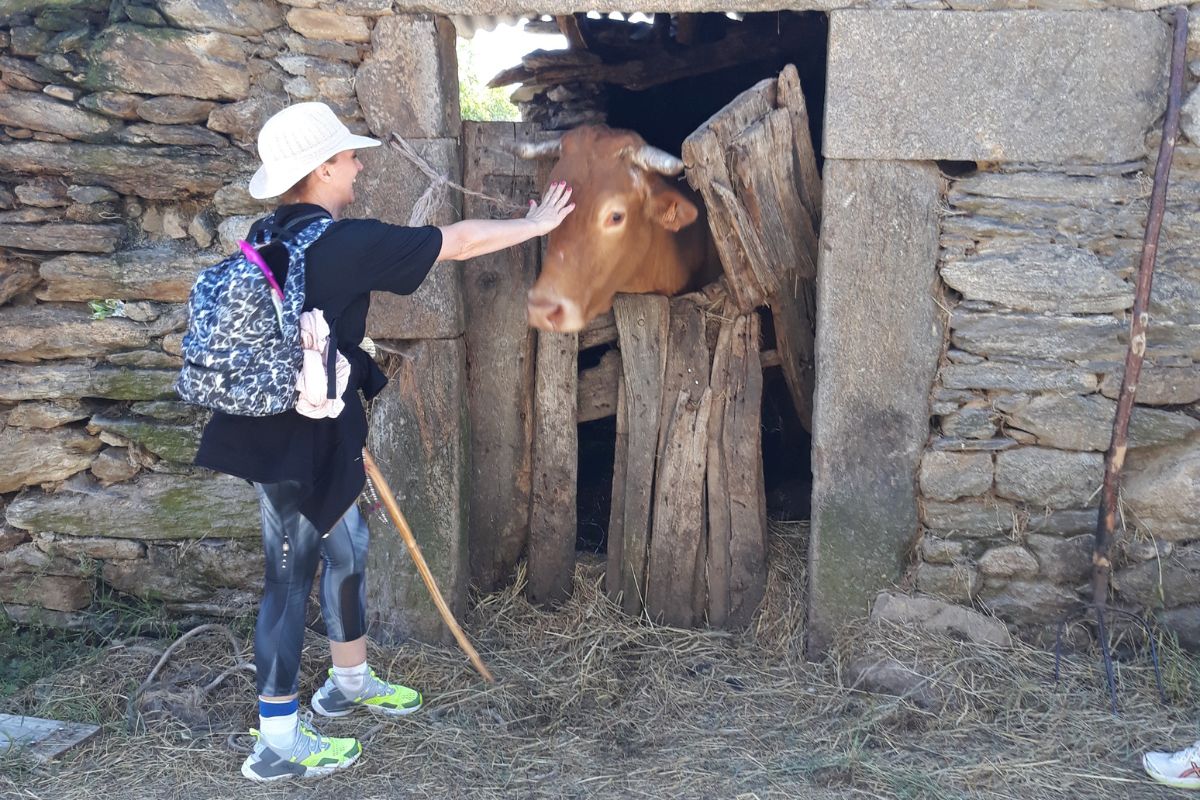
The best advice for beginners on the Camino is to enjoy the little things
Conclusions and Final Recommendations
In conclusion, the adventure of the Camino de Santiago awaits you with open arms. More than a route, it’s a magical journey of self-discovery, full of invaluable challenges and rewards. You will encounter stunning landscapes, rich cultures, and new friendships on your Camino de Santiago for beginners. Every step will be an opportunity to grow and learn. With this guide in hand and an adventurous spirit, you’ll be ready to embark on a journey that promises to be transformative and deeply rewarding.
Get ready to take the first step in this memorable experience! Oh, and going back to the pilgrim jargon, and a great piece of advice we must not forget to give you: be polite and don’t forget to greet and wish every pilgrim you meet a ¡buen Camino y una buena vida!

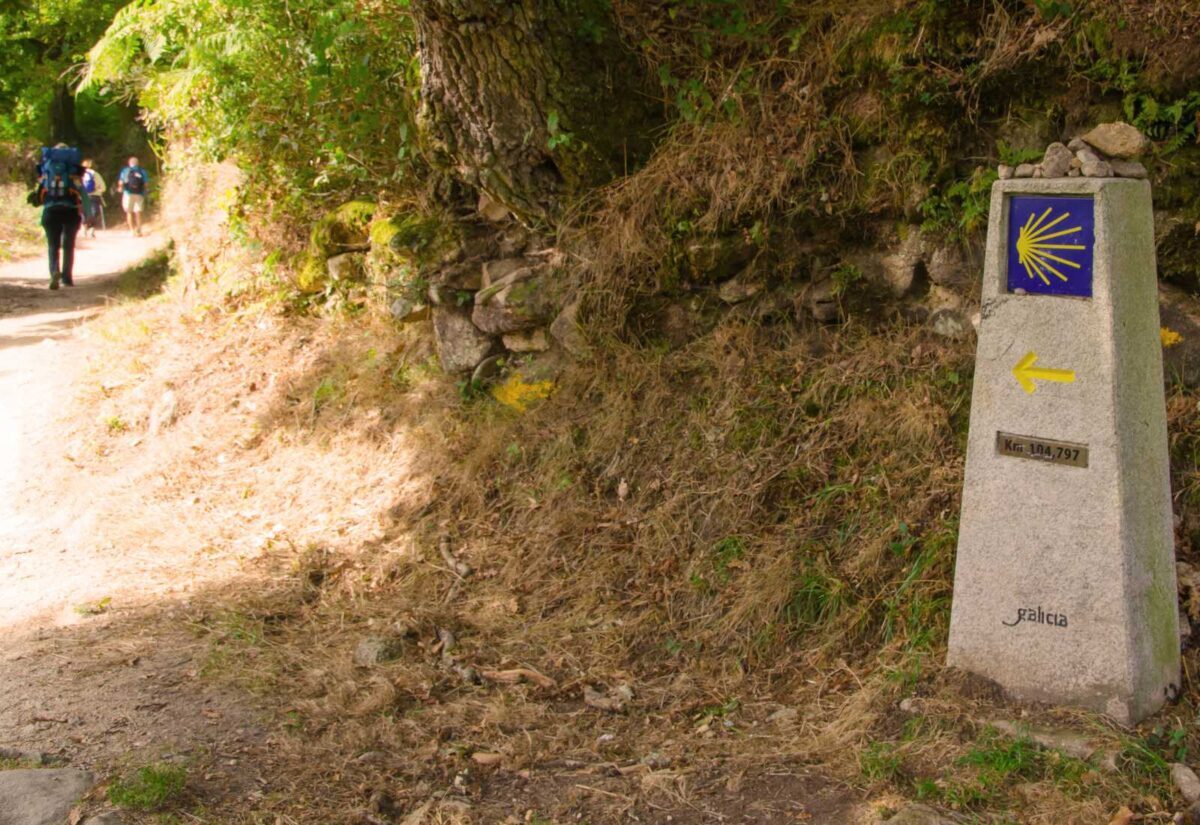


Leave A Comment